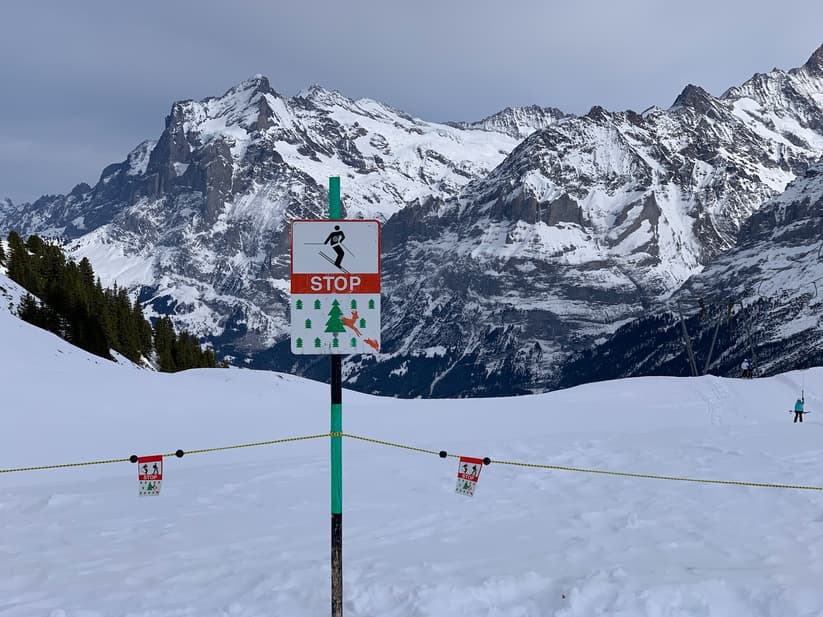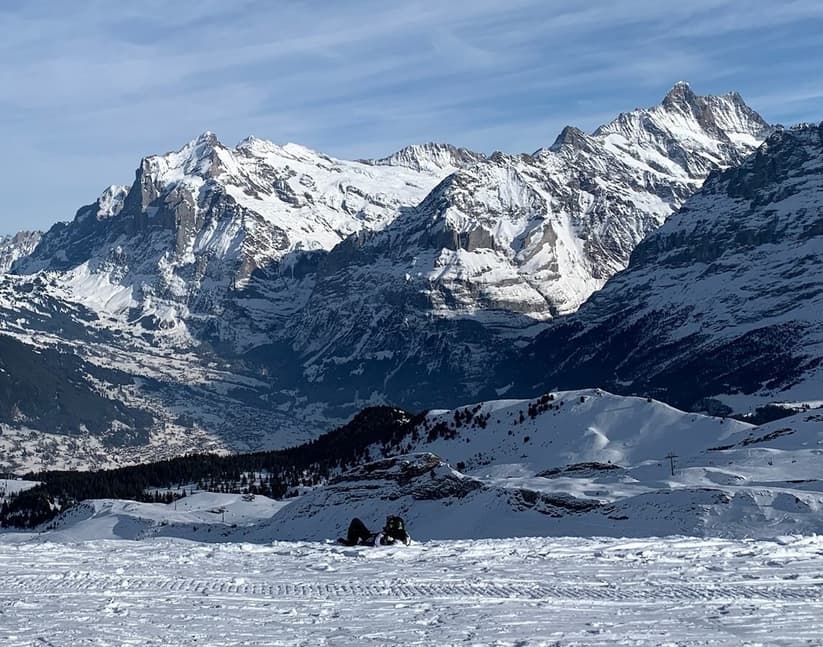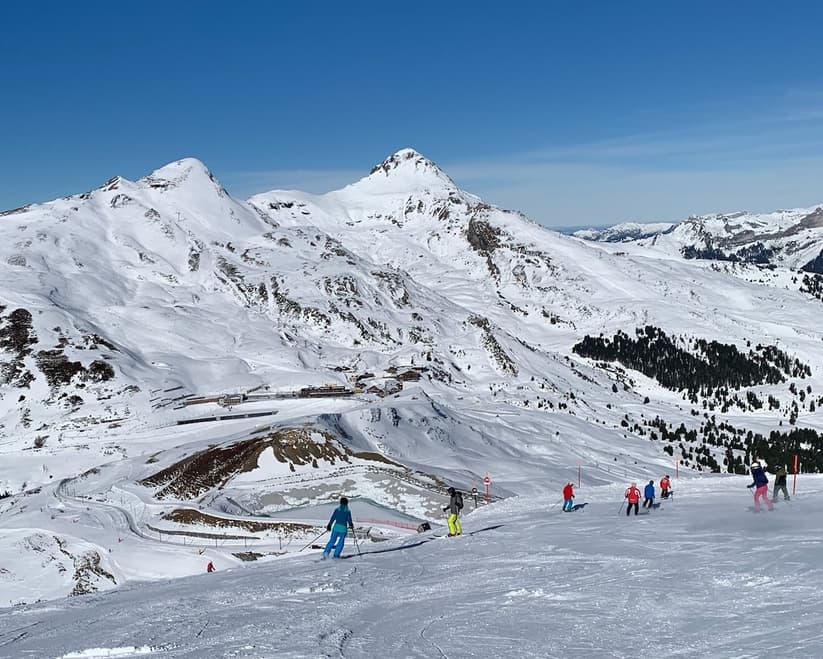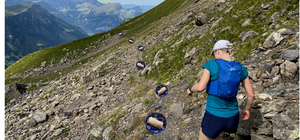26 February, 2023
I was fortunate enough to visit the National Running Show recently where I grabbed a seat and heard one of the top Canadian ultra-runners, Gary Robbins, giving his fireside chat. But as I leaned in to listen to him expand on gnarly tales of training and competing in some of the toughest races around he made a shocking admission.
Despite reaching a countless number of podiums and still holding the current record for the HURT Hawaii 100 miler for more than a decade he said that he didn’t consider himself to be only an ultra-runner. Because unlike many other world-class ultra-runners who sleep, eat and breathe running, Gary was happy to share that running is just one of the many sports he routinely does.
He actually also enjoys and spends a lot of time downhill skiing, MT biking, paddleboarding and kayaking among other sports. In fact, his love of other activities means that he regularly mixes them with sessions of strength work within his running training calendar. For someone who has achieved so much success in running ultras to reveal that he doesn’t only train by running made me wonder if Gary Robbins had unknowingly discovered the Holy Grail for runners. Maybe cross training by doing other sports is the key to longevity?
It's a bold statement to make because there are so many examples of renowned ultra-runners who have achieved their success by steadfastly sticking only to running, and lots of it. Some have taken it to the extreme. Dean Karnazes, for one, is a case in point and also happened to be headlining at the National Running Show. But the difference between the two ultra stars couldn’t be more different.
During Dean’s time on stage he admitted to being slightly obsessed with running and moving and now he rarely sits down. And I can testify that for the few moments he did on stage, he resembled a tightly wound spring ready to fire. It’s not surprising then that he described spending most of his time travelling on the long-haul flight to the UK by pacing back and forth down the aisles of the plane. And the only cross training he refers to is the endless number of ‘burpees’ and pull-ups he fits in at random moments of the day. Instead he advocates doubling or tripling up your training by adding in an extra run to work, doing another at lunch, then running back home again. He literally has no down-time but aspires to be constantly moving, even while working. Which is why he has used a standing desk in his office for more than a decade. Although his attitude to running and training 24/7 seemed like the polar opposite of Gary Robbins, I couldn’t have heard about these different approaches at a better time.
Because in a First-World running dilemma, I had a week-long skiing holiday booked about a third of the way through my training plan to run a spring marathon. Would taking a week off running throw my hopes of qualifying for the Boston Marathon out the window? Or would I not lose any fitness because I’d be downhill skiing every day? Does skiing count as cross training? Well I suspected what Gary and Dean might think about it but I wondered how it would affect the average runner. I soon found out that it depends on who you ask.

Most people will tell you that cross-country skiing makes a perfect cross training partner to endurance running because it uses all of your muscle groups and is extremely demanding of your cardiovascular system. However, when it comes to downhill skiing opinions are clearly divided. One camp, let’s call them Team Dean, believes that downhill skiing is not intense enough to really count as proper cross training and see it as more of a static sport that builds strength mainly in your legs and glutes. Some sceptics even describe it as simply squatting for 5 hours in the cold because although downhill skiing is hard on your cardiovascular system it’s only in frequent short bursts. Many also make the point that you recover every time you get to sit down on a chairlift, probably eating chocolate. At the most they see downhill skiing as alpine active rest.

Now the opposing camp, it has to be Team Gary, does not dispute the bare facts of the legs/glute strength building, cardio frequency and liberal use of chocolate. However, clearly it is possible to ski at different intensities and in different conditions. So the real truth about whether downhill skiing can count as effective cross training in place of the running you would have been doing essentially depends on how you ski. Because like everything, you get out of it what you put into it.
And I have to say that after spending a week downhill skiing in the Swiss Alps I am convinced that not only can downhill skiing count as cross training but that even doing it for a week can increase your strength and help your running. In other words, I am Team Gary.
I found that spending 6 long days skiing until I was literally exhausted felt like doing a never-ending strength workout. In addition, my cardio was frequently pushed like a series of downhill HIIT sessions at altitude. It was definitely not active rest. Although this is not to say that I did not absolutely love the thrill of flying down the hills while exploring different runs and testing the limits of my skills. But if you put everything into it and ski ‘hard’ then despite a little recovery on the lifts you are still forcing yourself to carve into the slopes all day when your quads are burning and crying out. Which means that you also find out very quickly exactly which muscles in your body you haven’t been using much for running. In effect, if you treat downhill skiing as cross training then you will benefit the most from it and that probably applies to any sport.

Now that I am back to running and another 2 weeks further into my training plan I have found that I feel stronger and even recovering better from the weekly long runs. I may never hope to be a world-class ultra-runner (or skier) but every now and then something that one of the greats says resonates with me. It was good to hear that Gary Robbins incorporates other sports to cross train with ultra-running because it has made me realise that it doesn’t have to be all or nothing. It’s better to be flexible and having a slightly more relaxed approach to a training plan. Especially if you get the chance to do another sport. It might even be worth adding one in because at least for me, I found that you can thrive from it.

Something else that seemed to do me no harm was the amazing Swiss cuisine. In addition to the obligatory chocolate, one dish that I enjoyed and made the perfect recovery meal after a long hard day was the irresistible Flammkuchen. It is somewhat like a pizza and I have come up with a healthy version for you to try: Healthy flammkeuchen.
I am originally from Canada but I settled in the UK after studying at university. Sports have always been a part of my life and I have participated and competed in several throughout my childhood. But today I would describe myself as mostly a runner, a mother of 3 grown-ups and a keen cook. As a teenager I was a sprinter and a slightly reluctant cross-country runner but while my children grew up I started to run further and further distances. I never thought that I could ever run anything longer than a half marathon but when my runner husband decided to do a marathon for his 50th in 2019 I found that I had a serious case of FOMO. My children encouraged me to sign up for my first marathon and I ran it just to see if I could finish. Somehow my time was good enough to qualify for the Boston 2020 Marathon. However, due to Covid it was postponed several times.
Like many other runners, I spent much of my time in the Covid lockdown keeping up my fitness by participating in virtual races while waiting for the real events to start up again. As time went on I found myself becoming fully immersed in the world of endurance running and ran the Threshold Trail Series ultra, Race to the Stones. Unfortunately, by the time the Boston Marathon was finally held in late 2021, I could not go because US travel restrictions were still in place. Although I missed my chance to run it and will now have to requalify again at least my time spent keeping in good shape wasn’t wasted. These days I participate in everything from half marathons up to ultras and have also run the Great Glen Way and West Highland Way in the Scottish Highlands.
I also work as a Registered Nutritionist with children and families and founded the consultancy Just add water® in 2019. I write a blog at https://justaddwaterblog.com/ to give free information and advice about nutrition and running whilst also sharing some of my favourite healthy recipes. The website is mainly aimed at busy families who want to make easy to prepare meals that are both healthy and really tasty, and for active families who want to know what they should be eating before, during and after playing sport.
I have always enjoyed cooking and previously cooked as a profession and I like to share my passion for good food. I have been involved in teaching cookery in schools, children's centres and for the NHS. I also enjoy entering the odd competition to push myself out of my comfort zone. I was awarded Highly Commended at the Teflon™ Diamond Standard Awards 2020 national culinary competition in the category of Keen Home Cook and was a National Finalist in 2022 & 2019. I have also had my recipes published in The Guardian's supplement, Cook; and featured in the 2012 Waitrose LOVE life calendar (July); and selected for inclusion in the 2020 #AnyWhichWayaBix Weetabix recipe book.
Most recent articles by Suzanne Anderegg

The summer is coming…but why do so many runners still try to outrun their thirst?

Most adults know that food shouldn’t be used as a reward for our children’s achievements but for some reason we don’t think that this applies to ourselves. Especially among endurance runners because sometimes good food can be the best motivation to carry on.

Runners can get a bit obsessed about achieving their Personal Best but there’s more to a PB than simply stats.
Most recent articles in RUNNING

Why is diet such a contentious topic in ultrarunning and why do I call it a myth? These are the topics that I will discuss in this article.

In my last piece for Outside & Active, I talked about what I believed the worst mistake a runner could make is.

Brooks supports trail runners to defy limits and empower their trail runs with the new Cascadia 18. The adaptable Cascadia combines DNA Loft v2 cushioning with TrailTack Green grip and a durable upper mesh to handle all terrains, providing necessary comfort and underfoot security on each surface.